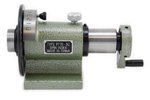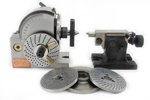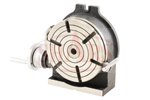- Joined
- Feb 7, 2014
- Messages
- 350
I have been shopping, and I am confused.
What is the difference between a universal index head and a semi-universal?
Are there index heads that are not universal, and what are they called and/or do?
It looks like a rotary table with index plates and a tail stock would do much the same job as an index head, but there must be more to it. An index head costs about twice as much as the rotary table solution.
What is the difference between a universal index head and a semi-universal?
Are there index heads that are not universal, and what are they called and/or do?
It looks like a rotary table with index plates and a tail stock would do much the same job as an index head, but there must be more to it. An index head costs about twice as much as the rotary table solution.



